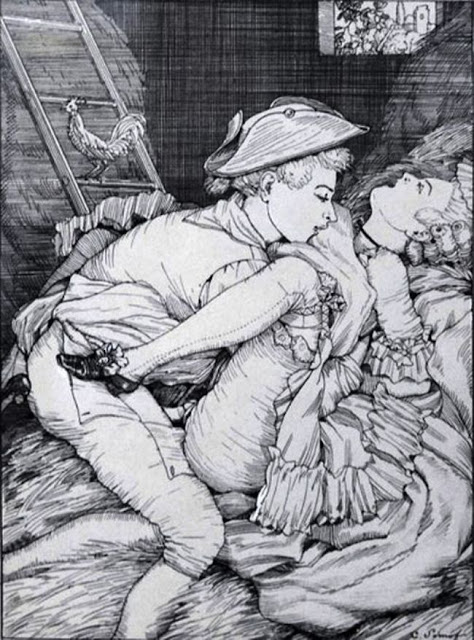We have just posted some gently sensual images by French painter and printmaker, Manuel Robbe (1872-1936), over on our
Venus Observations blog. Here are a
couple more overtly erotic works by him. Both called Les deux amies they are
quite explicit illustrations of lesbians.
In the top picture one girl caresses her friend's sex while she looks at
the viewer making him (or her) a voyeur to the scene. The blurring around the girl on the right's
hand may well be a deliberate attempt to suggest frantic movement.
The second picture has the first one
kissing her friend's groin. Both are
very nice illustrations although the bottom one is more finished and lacks the
loose spontaneity of the top one. The
girls in this one seem to be getting through quite a lot of Champagne!




















